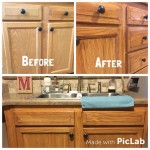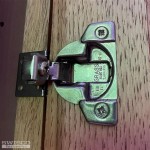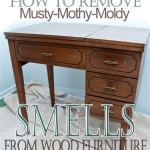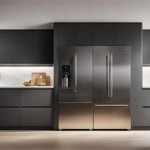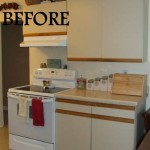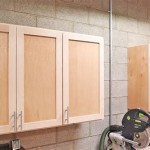How To Clean Non-Wood Kitchen Cabinets
Non-wood kitchen cabinets offer a sleek, modern aesthetic and often come with the added benefit of being easier to clean than their wooden counterparts. However, they still require regular cleaning to maintain their appearance and prevent the buildup of grease, grime, and food splatters. This guide outlines effective methods for cleaning various types of non-wood kitchen cabinets.
Before beginning any cleaning process, it is crucial to identify the cabinet material. Common non-wood cabinet materials include laminate, thermofoil, metal, and lacquered or painted surfaces. Each material requires a slightly different approach to cleaning to avoid damage. Identifying the material will ensure the most effective and safe cleaning method is employed.
For laminate cabinets, a gentle approach is recommended. Begin by removing loose dust and debris with a soft cloth or microfiber duster. A solution of warm water and mild dish soap can then be used for cleaning. Mix a small amount of dish soap with warm water in a spray bottle. Spray the solution onto a clean cloth, and wipe down the cabinet surfaces. Avoid spraying directly onto the cabinets, as excess moisture can seep into seams and cause damage. Rinse with a clean, damp cloth, and dry thoroughly with a soft towel to prevent water spots.
Thermofoil cabinets, known for their seamless, molded appearance, require similar care to laminate. Gentle cleaning with a soft cloth and a solution of warm water and mild dish soap is effective for removing everyday grime. Avoid abrasive cleaners or scrubbing pads, as these can scratch the thermofoil surface. For stubborn stains, a paste of baking soda and water can be applied directly to the stain. Allow the paste to sit for a few minutes before gently wiping it away with a damp cloth. Rinse and dry thoroughly.
Metal kitchen cabinets, often found in contemporary kitchens, are generally durable and easy to clean. However, they can be prone to fingerprints and smudges. A solution of warm water and mild dish soap can be used for routine cleaning. For stubborn grease or grime, a specialized stainless steel cleaner can be used, following the manufacturer's instructions. Avoid using abrasive cleaners or steel wool, as these can scratch the surface. Dry thoroughly after cleaning to prevent water spots and streaks.
Lacquered or painted non-wood cabinets require careful cleaning to avoid damaging the finish. Dust regularly with a soft cloth or microfiber duster. For cleaning, use a solution of warm water and a pH-neutral cleaner. Avoid using harsh chemicals, abrasive cleaners, or scrubbing pads, which can strip the finish. Apply the cleaning solution with a soft cloth, and rinse with a clean, damp cloth. Dry thoroughly to prevent water spots and streaks.
Regardless of the cabinet material, certain cleaning practices should be avoided. Harsh chemicals, abrasive cleaners, and scrubbing pads can damage the surface of non-wood cabinets. Excessive moisture should also be avoided, as it can seep into seams and cause damage. Always test any cleaning solution in an inconspicuous area before applying it to the entire cabinet surface.
Regular cleaning is essential for maintaining the appearance of non-wood kitchen cabinets. A weekly cleaning routine, consisting of dusting and wiping down surfaces with a mild cleaning solution, will prevent the buildup of grease and grime. Addressing spills and splatters promptly will also help to maintain the cabinets' appearance and prevent staining. For stubborn stains or heavy buildup, more intensive cleaning methods, as described above, can be employed.
The frequency of deep cleaning will depend on usage and cooking habits. Generally, a deep clean every few months is sufficient. This may involve removing items from the cabinets, cleaning the interior shelves and drawers, and thoroughly cleaning all surfaces. Regular maintenance and prompt attention to spills will significantly reduce the effort required for deep cleaning.
Maintaining the cleanliness of cabinet hardware is also important. Handles and knobs can accumulate grease and grime, and should be cleaned regularly. Remove the hardware, if possible, and wash it with warm soapy water. For stubborn grime, a paste of baking soda and water can be applied. Rinse thoroughly and dry before reattaching. If the hardware cannot be removed, clean it carefully with a damp cloth and mild cleaning solution, taking care not to get excess moisture on the cabinet surfaces.
By following these guidelines and tailoring the cleaning method to the specific cabinet material, one can ensure the longevity and aesthetic appeal of their non-wood kitchen cabinets, maintaining a clean and inviting kitchen environment.

How To Clean White Kitchen Cabinets 3 Best Ways Avoid Abbotts At Home

3 Ways To Clean Laminate Cabinets Wikihow

How To Clean White Kitchen Cabinets 3 Best Ways Avoid Abbotts At Home

3 Ways To Clean Laminate Cabinets Wikihow

How To Clean Kitchen Cabinets 9 Basics Bob Vila

How To Clean Kitchen Cabinets Everyday Skate

3 Ways To Clean Laminate Cabinets Wikihow

Power Clean The Kitchen With Steam And Scentsible
:max_bytes(150000):strip_icc()/ways-to-clean-wood-kitchen-cabinets-3017289-01-765f893e7cca49a1ab72d7c49efdf518.jpg?strip=all)
Tips For Cleaning Food Grease From Wood Cabinets

How To Clean Kitchen Cabinets So The Entire Room Shines
Related Posts



